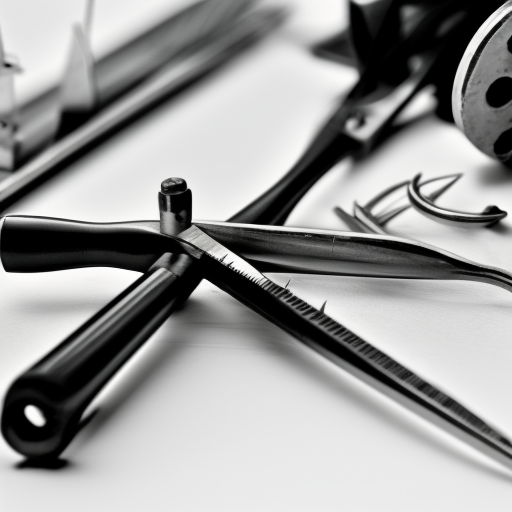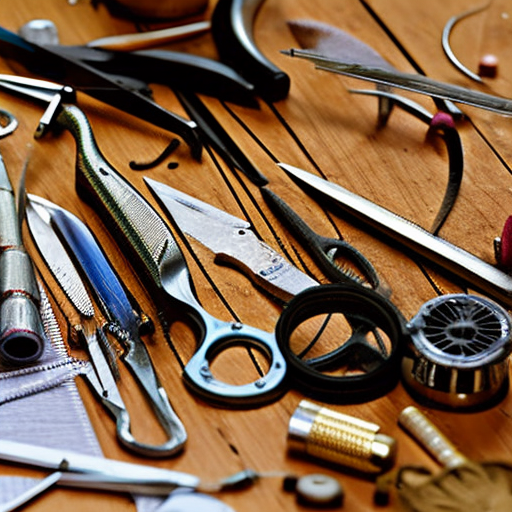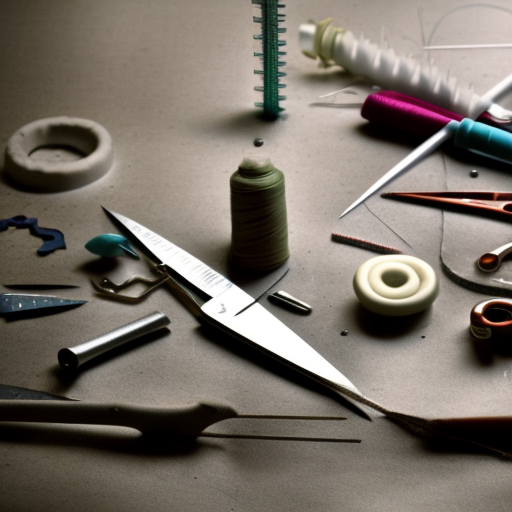Whether you are an experienced seamstress or a beginner just starting out, having the right materials on hand is crucial for any sewing project. With so many options available, it can be overwhelming to know exactly what you need. That’s why we have put together this complete guide of sewing material must-haves to help you stock up and get ready for your next masterpiece.
Fabric
The foundation of any sewing project is the fabric. When it comes to choosing fabric, there are several factors to consider. First, think about the project you are working on and what type of fabric would be most suitable. For example, if you are making a dress, you would want to choose a lightweight and flowy fabric like cotton or chiffon. If you are making a bag, a sturdier fabric like canvas or denim would be a better choice.
It is also important to consider the quality of the fabric. Cheaper fabrics tend to be thinner and may not hold up well in the long run. Investing in higher quality fabric may cost more upfront, but it will lead to a better end result and a longer-lasting product.
Lastly, think about the design and color of the fabric. You want to choose a fabric that not only fits the purpose of your project but also reflects your personal style. Don’t be afraid to mix and match patterns and colors, or experiment with different textures to add more visual interest to your creation.
Thread
Thread is another essential sewing material that often gets overlooked. It is important to choose the right type of thread for your project, as using the wrong thread can lead to breakage or uneven stitching. Generally, cotton thread is the most versatile and is suitable for most fabrics. However, if you are working with thicker fabrics like denim or leather, you may want to opt for a stronger thread like polyester or nylon.
When it comes to color, try to match the thread to your fabric as closely as possible. If you are unable to find an exact match, choose a slightly darker shade rather than a lighter one, as it will be less noticeable on the finished product.
Measuring Tools
Accurate and precise measurements are crucial in sewing. That’s why having the right measuring tools is essential. A tape measure, fabric ruler, and a clear ruler are all must-haves in your sewing kit. A tape measure is ideal for measuring curved areas such as the bust or waist, while a fabric ruler is perfect for straight lines and seam allowances. A clear ruler, on the other hand, is great for marking and measuring hems and edges accurately.
Cutting Tools
When it comes to cutting fabric, having sharp and reliable tools is a must. Scissors specifically designed for fabric cutting will provide clean and precise cuts, making your sewing process much more manageable. Invest in a good pair of fabric scissors and keep them sharp by only using them for fabric. Additionally, a rotary cutter and a cutting mat are excellent tools for cutting multiple layers of fabric at once, saving you time and effort.
For finer details and intricate cuts, a pair of small embroidery scissors or a seam ripper can come in handy. A seam ripper is also great for fixing any mistakes or adjusting the fit of your garment.
Pins and Needles
Pins and needles are essential for keeping your fabric in place while sewing. Straight pins with glass heads are a popular choice as they won’t melt under the heat of an iron. Safety pins are also great for temporarily holding pieces of fabric together. Needles, on the other hand, are used to stitch together pieces of fabric. Different types of needles are suitable for different types of fabric, so make sure to research and choose the right one for your project.
Sewing Machine
While it is possible to sew by hand, having a sewing machine can save you a lot of time and effort, especially for larger projects. There are many types of sewing machines available, so it is important to choose one that fits your needs and budget. Look for features like adjustable stitch length and width, different stitch options, and a variety of presser feet to make sewing easier and more efficient.
Final Thoughts
Having the right sewing materials can make all the difference in creating a successful and beautiful project. While this guide covers the basics, don’t be afraid to experiment with different materials and tools to find what works best for you. With the right materials and a little bit of creativity, the possibilities of what you can create are endless.





Great guide! Sewing is my favorite! #SewingLove
Very useful guide! Perfect for those just getting started in sewing or hobbyists looking to expand their supplies. #AlwaysLearning
Absolutely fantastic post! My sewing projects just got a lot easier! #SewingPro
Absolutely essential for my next crafting project! #Handicrafting